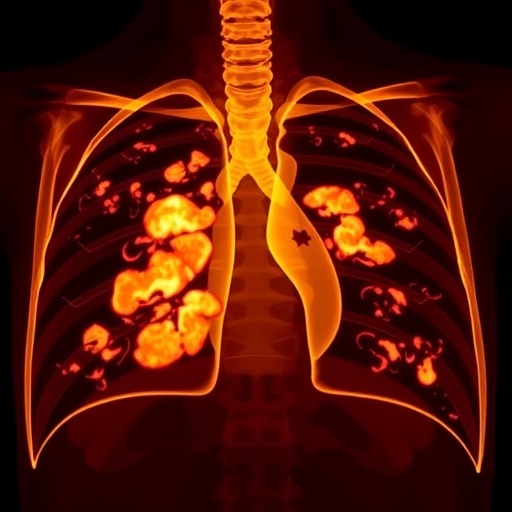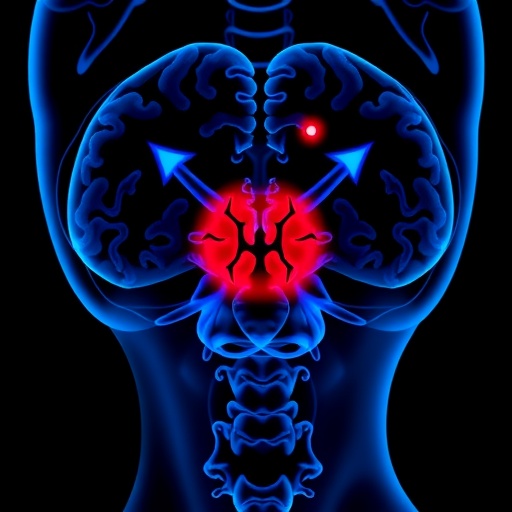In a groundbreaking study published in Pediatrics Radiology, researchers have investigated the role of lung nodules in the assessment of metastasis in pediatric osteosarcoma. Osteosarcoma is a primary bone cancer that predominantly affects children and adolescents, and it has been a significant source of concern in pediatric oncology due to its aggressive nature and propensity for metastasis. The findings of this study emphasize the critical importance of accurately identifying lung nodules as a means to determine the presence of metastatic disease, which can significantly impact treatment strategies and patient prognosis.
The research team, led by Dr. H. Martínez Sánchez, delved into the characteristics of lung nodules observed in pediatric patients diagnosed with osteosarcoma. Their analysis was grounded in radiological imaging techniques, focusing specifically on the presence of calcifications within these nodules. The study’s primary assertion is that calcification stands out as the most reliable radiological indicator for confirming the metastasis of osteosarcoma, a finding that could alter clinical practices in diagnosing metastatic disease in this vulnerable population.
Calcifications in lung nodules, while often a common feature in various pathological conditions, were shown in this study to correlate strongly with the metastatic processes in osteosarcoma patients. The significance of these calcified nodules cannot be understated, as they can provide crucial insights into the aggressiveness of the disease and guide clinicians in tailoring therapy adeptly. By identifying calcification patterns, healthcare providers can make more informed decisions regarding the management of osteosarcoma, which may ultimately improve patient outcomes.
Another compelling aspect of the study is its implication for radiologists and oncologists. Understanding the radiological features that distinguish benign from malignant lung nodules is essential for appropriate clinical decision-making. The authors of the research highlight the necessity of training and educating healthcare professionals to recognize these subtle markers of cancer spread. A more refined approach to interpreting lung imaging could lead to earlier interventions and better-targeted therapies, particularly in a disease known for its rapid progression.
This research also shines a light on the need for further exploration in the field. The authors suggest that while calcification serves as a reliable marker, additional studies are needed to verify these findings across larger patient cohorts and various imaging modalities. There lies an opportunity for future research to refine the diagnostic criteria for lung nodules in osteosarcoma patients, potentially expanding on the radiological feature set that can aid in diagnosing metastatic disease.
In the context of global health, the significance of this study extends beyond pediatric oncology specialists. The findings presented could have broader implications in the fields of radiology and oncology, promoting interdisciplinary dialogues that foster enhanced diagnostic accuracy across multiple cancer types. As healthcare evolves, integrating cutting-edge research into clinical practice ensures that patients receive the most effective care based on the latest scientific evidence.
Moreover, the advancements in imaging technology further elevate the potential applications of these findings. Innovations such as 3D imaging and advanced PET scans may offer additional tools for detecting and characterizing lung nodules, potentially enhancing the precision of diagnoses. With these improvements in technology, it’s plausible to foresee a future where the identification of cancer metastasis becomes even more streamlined and accurate.
The study’s implications may also extend to the development of new therapeutic protocols. Understanding how to classify and interpret lung nodules could lead to personalized treatment plans, providing a significant shift in management strategies for pediatric osteosarcoma patients. The intersection of diagnostic radiology and treatment decision-making could streamline patient care processes, ensuring that interventions are timely and appropriate.
One of the challenges that remain, however, is the accessibility of advanced imaging technologies in many healthcare systems around the world. The researchers emphasize that the availability of sophisticated imaging techniques needs to become a priority, particularly in regions with limited resources. Bridging the technological gap will be essential to ensure that all pediatric cancer patients benefit from the latest advancements in diagnostic imaging.
Given the ethical considerations surrounding pediatric health, any advancements in diagnostic accuracy must also be accompanied by a commitment to patient-centered care. Families facing the challenges of a cancer diagnosis need clear communication and support as they navigate complex medical decisions. The findings from this study underscore the importance of adopting a holistic care approach that melds advanced medical technologies with emotional support for patients and their families.
Overall, this research marks a significant contribution to the understanding of lung nodules in pediatric osteosarcoma and reaffirms the critical role that calcification plays in diagnosing metastasis. As the scientific community continues to dissect these findings, the hope is that they will lead to improved screening protocols and better clinical outcomes for children battling this formidable disease.
The countdown to clinically translating these findings into practice begins now. As researchers and clinicians collaboratively navigate the nuances of pediatric osteosarcoma, the insights gleaned from this study lay a robust foundation for the future of oncological care. With ongoing commitment and research, we can aspire to eliminate the burden of osteosarcoma and ensure brighter prospects for young patients facing cancer.
In conclusion, the research led by Dr. Martínez Sánchez and colleagues establishes calcification as a key indicator for assessing lung nodules in pediatric osteosarcoma cases. With the promise of refined diagnostic procedures and personalized treatment paradigms, this study paves the way for a new era in the management of pediatric cancers.
Subject of Research: Lung nodules and their role in assessing metastasis in pediatric osteosarcoma.
Article Title: Lung nodules in pediatric osteosarcoma: calcification as the most reliable radiological indicator to confirm metastasis.
Article References: Martínez Sánchez, H., Cañete Nieto, A., Sánchez Mateos, D. et al. Lung nodules in pediatric osteosarcoma: calcification as the most reliable radiological indicator to confirm metastasis. Pediatr Radiol (2025). https://doi.org/10.1007/s00247-025-06410-3
Image Credits: AI Generated
DOI: https://doi.org/10.1007/s00247-025-06410-3
Keywords: pediatric osteosarcoma, lung nodules, metastasis, calcification, radiology.
Tags: assessing lung metastasis in pediatric patientscalcification as a lung metastasis indicatorcalcifications and lung cancer correlationDr. H. Martínez Sánchez studyimplications for clinical practices in oncologyimportance of calcifications in osteosarcomalung nodules in cancer assessmentmetastatic disease diagnosis in childrenpediatric oncology challengespediatric osteosarcoma researchradiological imaging in oncologytreatment strategies for osteosarcoma





